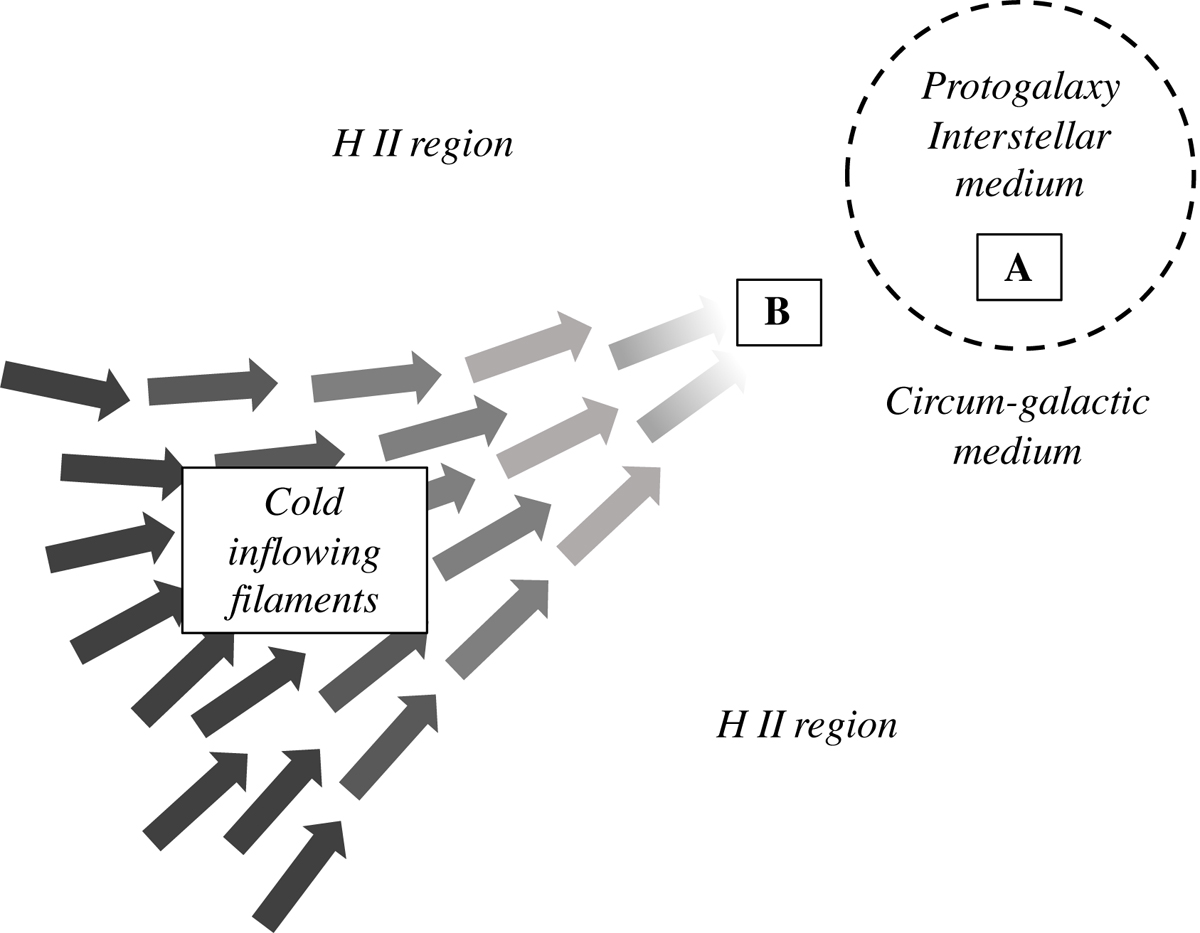Fig. 8.

Schematic illustration of the CR heating processes operating in and around a starburst protogalaxy. At A, internal interstellar heating is dominated by the DC channel as CRs and their secondaries are not able to easily escape from the galactic magnetic field of their host system. This increases thermal gas pressure and leads to quenching (French et al. 2015). At B, the IX channel heating mechanism is more important, as this does not rely on CR escape. The X-rays emitted from the galaxy begin to heat and evaporate any cold inflowing filaments, and can do so on a timescale shorter than the inflow time. Such filamentary inflows are required to drive star-formation by providing cold gas which can more easily undergo fragmentation and collapse than ambient interstellar gas (Ribaudo et al. 2011; Sánchez Almeida et al. 2014), so their destruction could strangulate the galaxy (Ribaudo et al. 2011; Sánchez Almeida et al. 2014; Peng et al. 2015).
Current usage metrics show cumulative count of Article Views (full-text article views including HTML views, PDF and ePub downloads, according to the available data) and Abstracts Views on Vision4Press platform.
Data correspond to usage on the plateform after 2015. The current usage metrics is available 48-96 hours after online publication and is updated daily on week days.
Initial download of the metrics may take a while.


